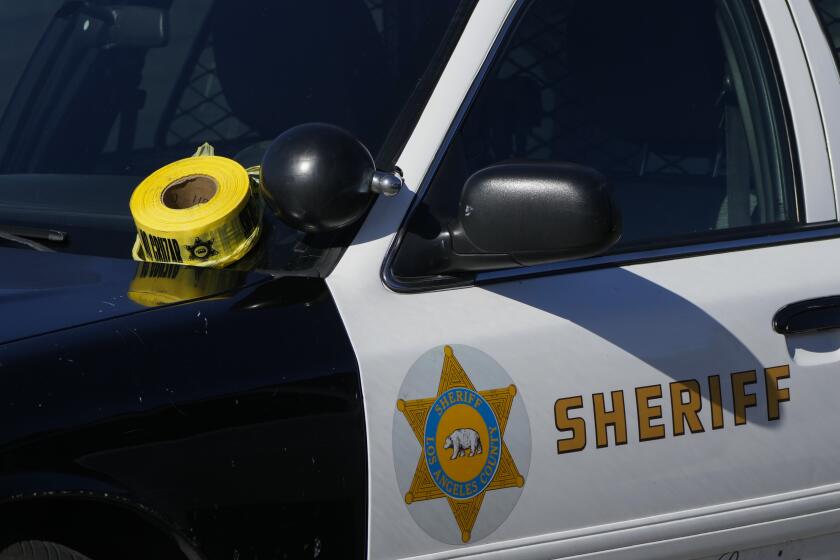WEST COVINA : Simulators Train Police in Field Tactics
It’s virtual reality meets West Covina Blue.
In a room carved out of a city parking garage, West Covina police officers engage in high-speed pursuits in inclement weather, follow drunk drivers, and defend themselves and innocent citizens against gun-wielding car thieves and political assassins.
The Police Department recently bought a shooting simulator and three driving simulators to help train its officers to make good judgments, West Covina Police Chief John Distelrath said. The Los Angeles County and San Bernardino County sheriff’s departments and the San Jose Police Department also use computer-controlled shooting and driving simulators. But the West Covina Police Department is the first agency to use both simulators in the same facility, enabling officers to go straight from a pursuit to a shooting situation, a highly realistic situation, Cmdr. Ron Gannon said.
Officers using the driving simulators sit inside an electronic mock-up of a police car. Surrounded by video screens, they steer their vehicles through fog, pursue criminals and rush to emergencies.
The idea is to teach split-second decision making, said Officer Dennis Mascilak, one of three officers selected to train the department on the driving simulators. Mascilak, who has been a traffic officer for 17 years, said the scenarios mimic situations on the streets.
The three driving simulators can allow officers to participate in the same chase scenario. They also can be wired to communicate with the department’s dispatchers and with each other. One of the driving simulators even flickers red and blue lights during a chase.
All 114 of West Covina’s police officers eventually will train on the driving and shooting simulators, Distelrath said.
When they use the shooting simulator, officers face a large screen on which a variety of scenarios are projected from a laser disc. With real guns altered to fire lasers registered by a computer, the officer interacts with the situation projected on the screen. When the scenario is over, the computer registers response times, number of shots fired and number of shots missed. Four officers can use the shooting simulator at once and the computer registers each officer’s shots.
A recent training session rehearsed an officer through a domestic disturbance call.
In that scenario, the officer goes to a house where a man named Frank is holed up in his bedroom, armed with a handgun. The officer talks to the screen, responding as he would if it were a real call. The man’s screen wife, cocktail in hand, screams hysterically at the officer.
“He has an arsenal in there,” she says. “He’ll shoot me and he’ll shoot you.”
The man refuses to come out. When the officer opens the door, the man aims his gun.
This time, the officer was quicker and fired into the man’s chest.
The film stops. An outline of Frank’s body appears on the screen, telling the officer that the shot he fired was lethal and telling him the amount of time it took for him to fire at the man.
Distelrath said the simulators will help police make the correct life-or-death decisions involving shootings and pursuits.
The equipment, which cost about $160,000, was bought with money from drug asset forfeiture funds, Distelrath said.
Distelrath said he plans to reimburse the fund with money the simulators will make for the department. The department plans to charge other agencies to use the high-tech equipment. Local police academy cadets and participants in the department’s citizens academy will also use the equipment.
More to Read
Sign up for Essential California
The most important California stories and recommendations in your inbox every morning.
You may occasionally receive promotional content from the Los Angeles Times.










